There’s nothing better than cooling off in a pool on a hot summer day. And, if you’re lucky enough, you have one at home. If you’re searching for ways to enhance your outdoor experience, but don’t have enough space in your backyard, then a plunge pool is something to consider. Smaller than a regular-sized swimming pool and larger than a hot tub, plunge pools are the best compromise.
Pools are a great addition and can increase the value of your home. Plus, they are a home trend that is popular and on the rise. So whether you’re considering adding a small plunge pool to your backyard, or looking for homes that have a plunge pool, read on to see why you might want to consider one.
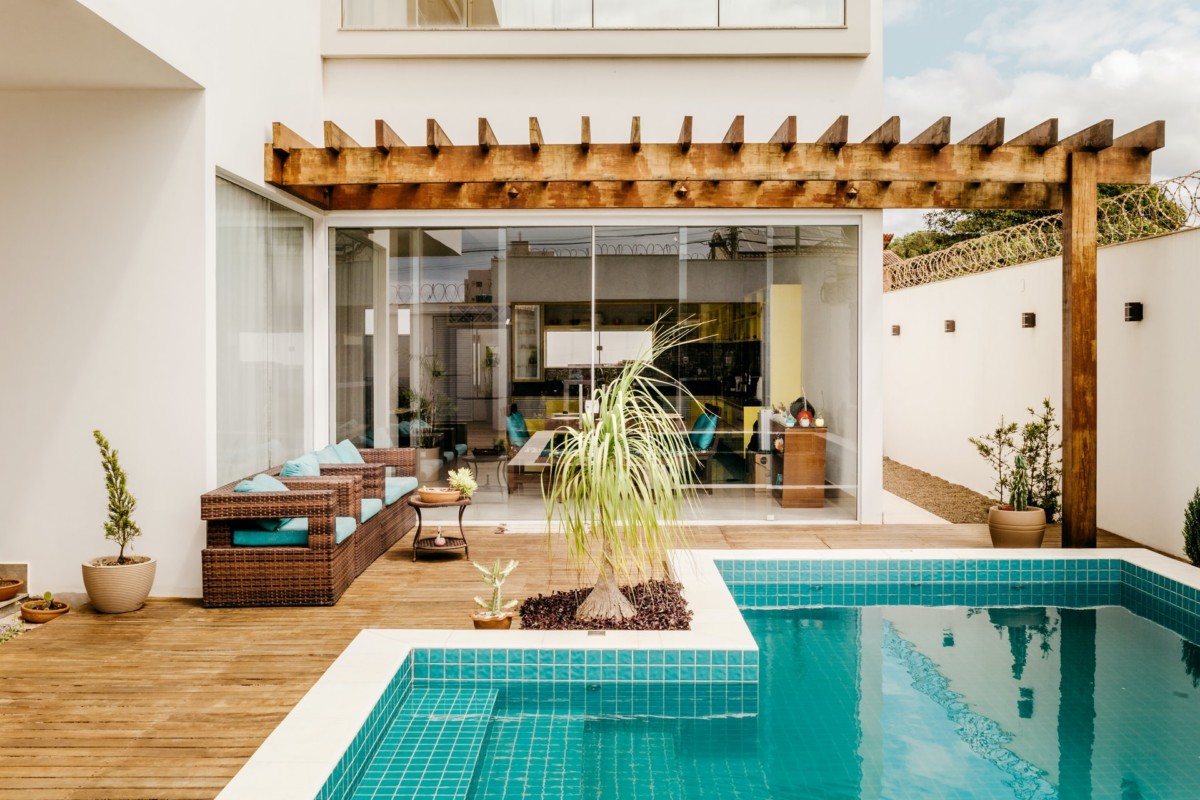
What is a plunge pool?
A plunge pool is smaller than a full-size pool used for wading, lounging, and aquatic rehabilitation. As sizes vary, most plunge pools usually average around 6×10 feet wide and 10×22 feet long. Due to their size, these types of pools are not intended for swimming.
The bottom is usually flat and ranges around 4-7 feet deep, which is great for cooling off. Plunge pools can be installed either above or in-ground depending and require the same parts as traditional pools but require less upkeep.
What are the pros and cons of plunge pools?
Before you decide what pool is right for you, you’ll want to consider the pros and cons of plunge pools. Many of its benefits come with the size of the pool, which includes the space requirements, affordability, and maintenance.
Plunge pools are not for everyone, and you may think the cons outweigh the pros, given the limited space and uses. Let’s take a look:
Pros
Small space requirements
Since the average size of a plunge pool is smaller than a traditional swimming pool, homeowners with a small yard can benefit from installing one. They don’t take up much space so you can dedicate a portion of your yard to the pool and the other for entertainment.
Affordability
Small in size, a plunge pool is generally less expensive to buy, install and maintain than a traditional swimming pool. For example, heating the pool is much quicker and doesn’t require a lot of energy. Additionally, the pool water is kept cleaner with fewer chemicals.
Maintenance
Compared to a traditional pool, plunge pools are easier to clean because of their small size. Since it is a pool, it is good to practice regular pool upkeep to reduce the possibility of infections and diseases. To keep your pool clean and uncontaminated, you should have it cleaned weekly.
Automatic Pool Covers recommends adding an automatic pool cover to protect the swimming pool and help reduce maintenance costs. “Not only does an automatic pool cover allow homeowners to open and close the pool in under one minute, but it also keeps debris from getting in the pool when the pool is not in use, helps retain pool water heat, and reduces water evaporation and splash-out.”
According to Pool Stain Drop, “Staining and discoloration issues on swimming pools and spa surfaces can be troublesome and difficult to remove and keeps the pool water from being inviting. However, there are products like Spot Stain Chalk that can instantly remove stains from pool and spa surfaces.”
Cons
Limited space
While the size of a plunge pool may be a pro for some, if you’re looking for a pool that fits numerous people, a plunge pool might not be for you.
Not for swimming
As one might think of pools as a fun way to enjoy the weather and swim, these pools aren’t for swimming. Instead, these pools are great for lounging, wading, and cooling off.
Safety
Just with any pool, safety can be a concern – especially with kids and pets. Since most plunge pools are shallow, keep a close eye on the kids as this pool can cause harm if one were to jump.
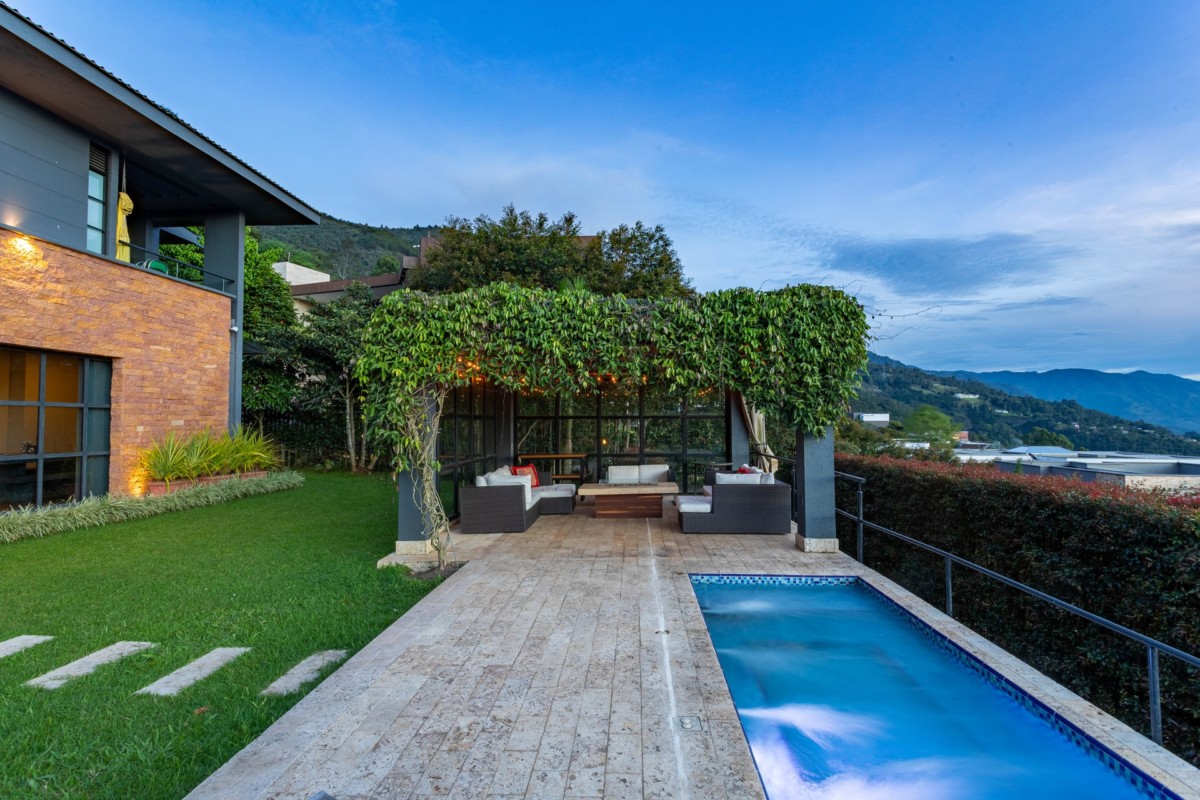
How much does a plunge pool cost?
As plunge pools can vary in size, so can the cost. The price can range anywhere from $10,000 to $50,000. Many factors influence the cost, such as size, material, and installation. Of course, you’ll have to consider a building permit if your state requires it, labor costs, land excavation rates, and other add-ons that require time and labor.
Materials
As for materials, there are three popular choices. These include fiberglass ranging from $10-$20K, vinyl ranging from $10-$22K, and concrete ranging from $20-$35K – the most expensive option.
Installation
There are two types of installations; above-ground and in-ground. Plunge pools that are above-ground are typically less expensive than in-ground plunge pool installations because they don’t necessarily need a professional to install them. Above-ground installation can cost anywhere from $3K-$30K, whereas the in-ground installation cost can range from $10K-$35K.
Maintenance
Despite maintaining your plunge pool yourself, you can also hire a professional pool cleaning company to do it for you. Cleaning accessories are pretty affordable and located on various sites, but a professional cleaning service can range anywhere from $75-$120 monthly.
How to care for your plunge pool
Although less maintenance is required to upkeep your plunge pool, there are many different ways to clean your pool, just as with a traditional pool.
Natural Chemistry advises that proper pool care is based on three significant P’s: Prevent disease, Protect equipment, and Provide the expected pool experience. “Algaecides, enzymes, and phosphate removers are three specialty chemicals that will help ensure that the chlorine in the pool water is sanitizing or controlling bacteria.” They go on to say. “A preventative algaecide should also be a part of any pool care maintenance program to maximize liquid chlorine’s impact, so adding an algaecide weekly allows chlorine to kill bacteria and not get used up killing algae—with less work for chlorine to do, the longer it will last.”
Water Tech says, “pool owners interested in keeping their pools clean, whether spot cleaning leaves and sand or vacuuming the bottom, should consider a battery operated pool cleaner.” A new battery-operated, cordless pool vacuum like their Volt FX-8Li offers separate attachments for every pool surface, whether it be vinyl, fiberglass, gunite, or tile.
ProTeam® Supreme Plus adds, “A borate-based pool additive is the pool pro’s secret to easy water care. A borate product can reduce overall chlorine usage and inhibit equipment corrosion while reducing eye and skin irritation. It also helps to maintain a more stable pH and alkalinity environment.” They continue with, “Borates have a buffering ability which allows pool water to remain at a more neutral pH level for a longer period, allowing the chlorine to be more efficient and effective at sanitizing water.”
Pool owners looking for an alternative to the traditional adding of chlorine to their pool water should consider an on-site chlorine generation like Chlorine Genie. They state, “The Chlorine Genie eliminates the need to bring chlorine to the pool and instead produces everything the pool needs in the one place. This helps homeowners save money, reduce or eliminate chemical usage, and make pool maintenance easy and simple.”
Different plunge pool ideas
There are many different pool ideas you can add to your small backyard. From an in-ground installation of an oval, rectangle, or round shape to an infinity pool with jets, you can create a pool that fits any need and stay within your budget.
You may also wonder if plunge pools can be heated? And the answer is yes; despite their size, heating a plunge pool will add to the overall cost. Get creative by adding in-pool seating and stairs, or go fancy with a small water feature. There are many backyard oasis ideas – the possibilities are endless.
According to Rico Rock, an artificial rock and waterfall manufacturer for pools, “When looking to update and ‘resort-scape’ your pools, one of the easiest ways to create a magical backyard escape is to use an artificial rock to add water features. Luckily, artificial rock suppliers now offer a wide range of component water features pre-designed into kits to create grottos, caves, and cascading waterfalls that provide a guaranteed finished look.”
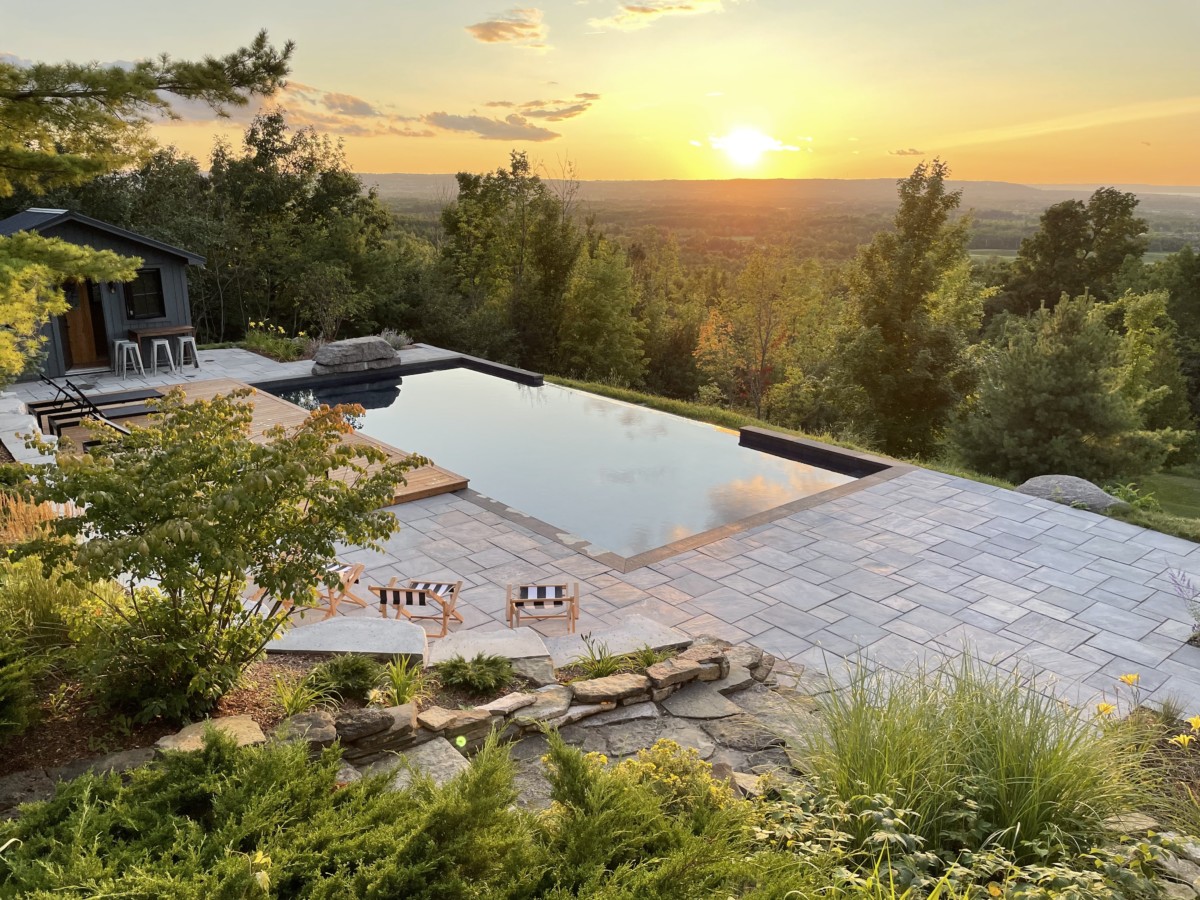
Photo courtesy of RENOLIT
Renovating a plunge pool
If you’re looking to renovate your plunge pool, you’ll want to consider aesthetically pleasing materials that provide high value. RENOLIT, a leading manufacturer of PVC sheets for pools, encourages homeowners to choose a weld-in-place pool liner when renovating their new or existing plunge pool.
“One of the main advantages of the membrane pool finish is that it doesn’t crack regardless of freeze-thaw conditions or earthquakes if you are in California as the membrane completely seals the pool’s structure and keeps it water-tight.” They continue with, “the weld-in-place membrane lends itself to fitting custom pools or older pools with unusual shapes and designs. They offer the huge advantage of providing an exact fit and, of course, being made of a thicker 80 mil mesh reinforced PVC; the longevity is a benefit that certain customers want to have in their pool, as these membrane liners last a lot longer than a traditional vinyl liner.”
How to find a house with a plunge pool in your area
If these pools are for you, Redfin makes it easy to find homes with this feature in many desirable locations.
1) First, go to Redfin.com, search for the desired city, and press enter. In this case, we will put Phoenix, Arizona.
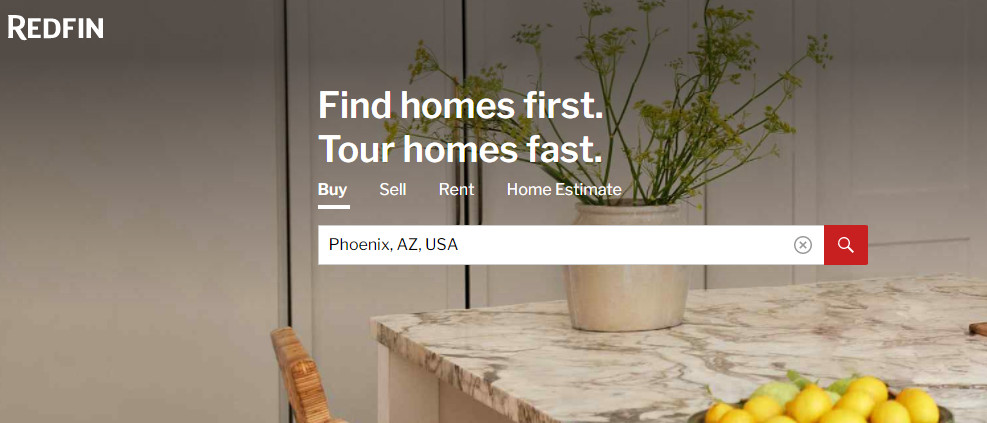
2) Next, once the homes populate, toggle over to the ‘All filters’ tab. Scroll down until you see ‘Keyword search.’

3) After finding the ‘Keyword search’ box, type plunge pool and select ‘See homes’ on the bottom right.
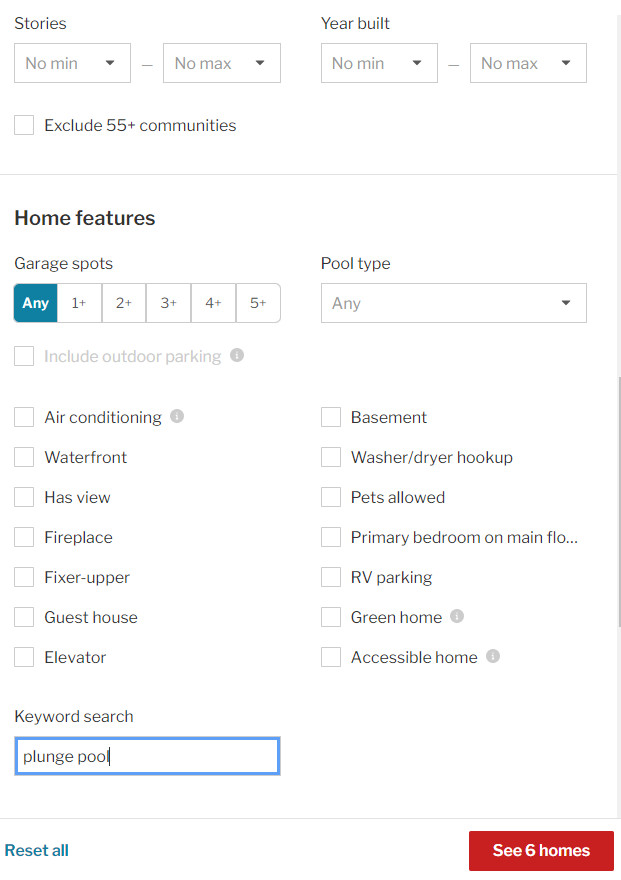
The homes with plunge pools should populate your page. A plunge pool can add value to your home. And with this information, you can make a decision that’s right for you.
The post What are Plunge Pools? Everything You Need to Know appeared first on Redfin | Real Estate Tips for Home Buying, Selling & More.
